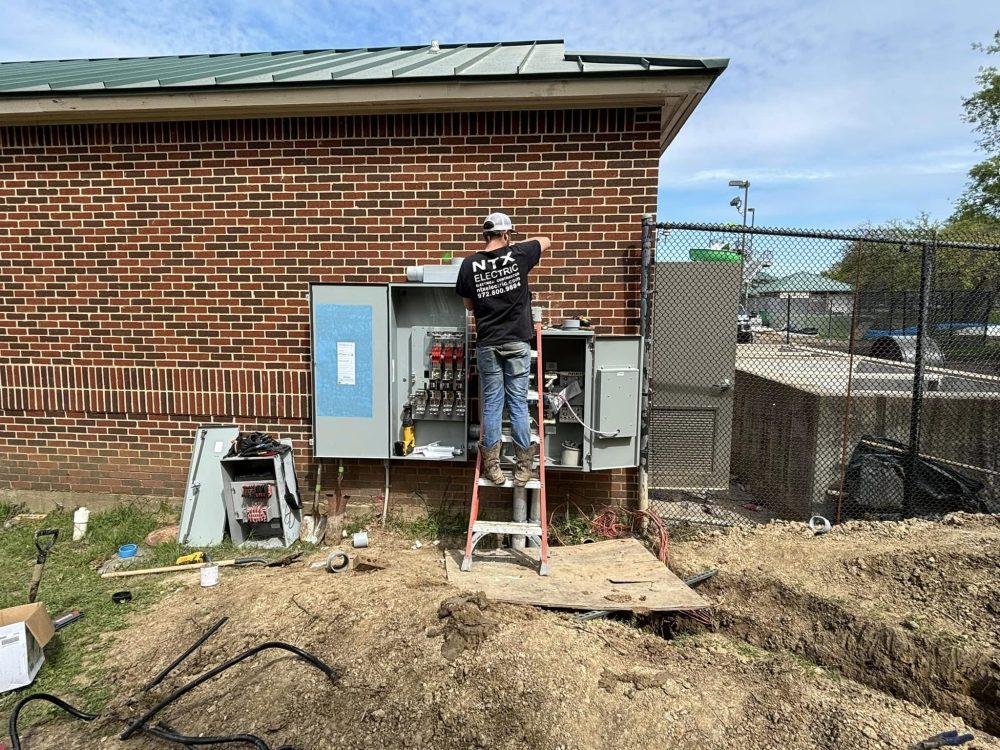Your home’s electrical panel might be the hardest-working component you never think about—until something goes wrong. Every time you flip a light switch, charge your phone, or run your dishwasher, that unassuming gray box mounted in your garage or utility room is managing the flow of electricity throughout your entire house. For many homeowners, especially those living in houses built before the 1990s, that panel is quietly struggling to keep pace with modern electrical demands. NTX Electric has helped countless homeowners discover that what seems like minor electrical quirks—lights dimming when the AC kicks on, breakers tripping during normal use—are actually urgent signals that your electrical infrastructure needs attention.
The gap between what older homes were designed to handle and what we actually need today has become strikingly wide. A typical home built in the 1960s had a 60-amp electrical service, which was perfectly adequate for the modest electrical needs of that era. Today, most homes require at least a couple of hundred amps to safely power everything from electric vehicle chargers to smart home systems, high-efficiency HVAC units, and the dozens of devices we use daily. This isn’t about luxury or excess—it’s about basic functionality and safety in a world where electricity powers nearly every aspect of our daily lives.

Understanding Your Home’s Electrical Capacity
Think of your electrical panel as the heart of your home’s power system. Just as your heart pumps blood through different pathways to reach every part of your body, your panel distributes electricity through various circuits to power different areas and appliances in your home. When that system becomes overloaded, the consequences range from frustrating inconveniences to genuine safety hazards.
Older panels, particularly those with 100 amps or less, simply weren’t engineered for contemporary electrical loads. When you’re running your central air conditioning, electric dryer, kitchen appliances, and charging multiple devices simultaneously, you’re asking that panel to manage far more than it was designed to handle. The result is often a cascade of problems that many homeowners learn to live with, not realizing there’s a better solution.
Recognizing the Warning Signs
Your home has ways of telling you when the electrical panel has reached its limit. Frequently tripped breakers aren’t just annoying—they’re your panel’s way of protecting your home from dangerous overloads. When you find yourself regularly resetting breakers or planning your appliance use around what else is running, your electrical system is waving a red flag.
Physical signs matter too. Panels that feel warm to the touch, emit buzzing sounds, or show any signs of scorching or discoloration require immediate professional attention. These aren’t cosmetic issues—they’re indicators of potentially dangerous electrical problems that worsen over time. Some older panels, particularly certain models from the 1970s and 1980s, have known safety issues that make replacement not just advisable but essential.
The Modern Solution: Professional Panel Upgrades
Upgrading your electrical panel is more than just swapping old equipment for new. A proper panel upgrade involves assessing your home’s total electrical needs, ensuring adequate service from the utility connection, installing a panel with sufficient capacity and modern safety features, and bringing everything up to current electrical codes. This comprehensive approach ensures your home can safely handle both your current needs and future expansion.
Modern panels include critical safety features that older models lack. Arc-fault circuit interrupters detect dangerous electrical arcs that can cause fires, while ground-fault circuit interrupters protect against electrical shock in areas exposed to moisture. These technologies have become standard in new installations because they’ve proven remarkably effective at preventing electrical accidents.
Planning for Your Home’s Electrical Future
Today’s panel upgrade isn’t just about solving current problems—it’s about preparing for tomorrow’s needs. Planning to install solar panels or add an electric vehicle charger? Those additions typically require significant electrical capacity. Even smaller renovations, like finishing a basement or adding a home office, often demand more circuits than an outdated panel can provide.
The investment in a panel upgrade pays dividends in safety, functionality, and property value. Homes with modern electrical systems are more attractive to buyers, carry lower insurance risks, and simply work better day to day. You’ll no longer need to strategize about which appliances can run simultaneously or worry about whether your electrical system is truly safe.
Moving Forward with Confidence
Your home’s electrical system shouldn’t be a source of stress or compromise. When you work with experienced professionals who understand both the technical requirements and the practical realities of modern homes, a panel upgrade becomes a straightforward process that delivers immediate benefits.
NTX Electric specializes in helping homeowners navigate electrical upgrades with clarity and confidence. Whether you’re experiencing obvious problems or simply want to ensure your home’s electrical system can meet your family’s needs, professional guidance makes all the difference. Reach out today to schedule a comprehensive electrical assessment and discover how a panel upgrade can transform your home’s safety, capacity, and peace of mind.
